Success at Great Taste Awards 2022!
We are incredibly proud of our range of sustainable products! In total we have won FOUR stars across 3 products at the 2022 Great Taste Awards for our Farrington’s Mellow Yellow products this year. The judges have awarded an incredible 2 stars Great Taste award to our versatile Cold Pressed Rapeseed Oil! For most products, this is their second, or even third Great Taste award but for our Smoked Oil, this is the first time it has been awarded a Great Taste star and we couldn’t be happier!
The Great Taste awards are the world’s largest and most trusted food and drink awards, with a panel of over 500 experts judging each product, being described as the ‘Oscars of the food world’. This year, 12,366 food and drink products entered into these prestigious awards, with only the very best products being awarded the coveted stars.
Here’s what the judges had to say about our products:
Cold Pressed Rapeseed Oil – 2 stars: Liquid Gold! A pleasingly golden oil, lightly aromatic, clean and fresh, nutty with light brassica notes. The texture was rich and smooth. The flavour although subtle, was wonderfully nutty and buttery. Very well done.
Honey & Mustard Dressing – 1 star: Glistening dressing with mustard seeds evident and glorious wafts of rapeseed oil. We loved the nutty rich flavour from the oil and thought the sweetness of the honey balanced so well with the bright acidity. Tastes fresh and home made.
Oak Smoked Rapeseed Oil – 1 star: Delicious oil well crafted and produced. This beautiful clear, golden oil almost glistens in the glass. There is a smoky, herbaceous aroma. On tasting it is clean and creamy so it fills the mouth and the gentle smokiness comes through very well and lingers on the finish.
We’re so proud of all our brilliant products, so if you haven’t tried them all, head over to our Where to Buy page and find your local stockist!
Cooking oils are a type of fat. Fat is a macronutrient (like protein and carbohydrate) that is made up of fatty acids. With so many different cooking oils available, most people don’t know which oil they should be using in their cooking for the healthiest results and often ask us what is the healthiest oil to cook with . This article will help to explain the different factors you should consider when choosing which oil to cook with.
What should we consider when looking at what is the healthiest oil to cook with?
When trying to decide which oil to cook with, we need to look at the following things. (We’ll explain each one a bit later on!)
– Saturated fat
– Unsaturated fat
– Trans fat
– Omega 3, 6 and 9
– Smoke point
– Vitamins and minerals found in the oil
What is fat?
Fat is a macronutrient (like protein and carbohydrate) and is made up of fatty acids. These fatty acids can be classified as saturated or unsaturated depending on their chemical structure. Unsaturated fatty acids include monounsaturated fatty acids and polyunsaturated fatty acids.
All fats provide 9 calories (kcal) per gram, regardless of the levels of saturated and unsaturated fatty acids, the big difference is the effect these fats have on your cholesterol levels so we need to ensure that we eat the healthiest fat we can.
Fat is a good source of energy and we need some fat in our diet to help us absorb the fat soluble vitamins A, D, E and K.
Within the body, fatty acids form part of our cell membranes and fat also helps to insulate and protect our internal organs, contributing towards maintaining our body temperature and is involved in lots of body processes such as the development of our brains and the communications which occur between different cells. Cholesterol is needed to produce bile acids, which help us to digest food, and also some of our hormones.
What is Saturated Fat?
Saturated fat is found in foods such as fatty meats, hard cheese and butter.
High intakes of saturated fat have been shown to raise levels of ‘bad’ (LDL – Low Density Lipoproteins) cholesterol in the blood. High blood cholesterol increases the risk of developing heart disease and stroke by building up in our arteries, causing them to narrow. It is best to eat foods that contain less saturated fat.
An easy way to tell if your oil contains high levels of saturated fat is whether it is solid at room temperature, if it is, it most likely contains a high amount of saturated fat.
Chemically speaking, saturated fats have don’t have any double bonds between their carbon atoms in the fatty acid chain.
What is Unsaturated Fat?
Often called ‘good fat’, unsaturated fat help to maintain a healthy cholesterol level and have even been known to help lower levels of harmful cholesterol. Unsaturated fats are either monounsaturated or polyunsaturated.
Our bodies are able to make most of the specific fatty acids we need apart from two polyunsaturated fatty acids which we must get from our diet. These two fatty acids are alpha linolenic acid (an omega 3 polyunsaturated fatty acid) and linoleic acid (an omega 6 polyunsaturated fatty acid). Our bodies need these for brain development, growth and for a healthy immune system.
Omega 3 and 6 are called essential fatty acids as we need to obtain small amounts of them from our diet. Alpha linolenic acid is found in rapeseed, walnut and soya oils and spreads made from these. Linoleic is also found in plant based oils such as sunflower, corn, peanut, rapeseed, olive, safflower, sesame, walnut and soya oil and spreads made from these. Both of the essential fatty acids are present in smaller amounts in foods such as meat, eggs and oily fish. Ideally our bodies need Omega 3 and Omega 6 in the right balance of one part Omega 3 to every two parts Omega 6.
What about Trans Fat?
These are the worst types of fat and should be avoided wherever possible as they have been known to increase blood cholesterol levels. Typically, foods with hydrogenated oils likely contain trans fats, such as fried foods, takeaways and hard margarines.
As you can see, the levels of saturated and unsaturated fat in your cooking oil is very important. We have broken down the most common oils in the simple table below for you.
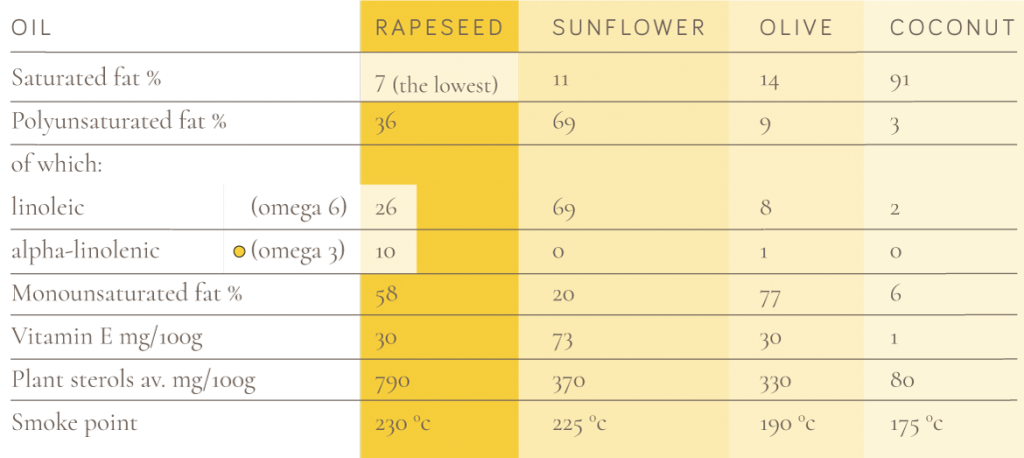
* Ideal balance of Omega 3 to Omega 6.
Does Smoke Point matter?
Other than the levels of different fats in your oil, if you are cooking with oil, you need to ensure that the smoke point is suitable. It can be dangerous to take an oil over its smoke point as this can cause the chemical structure to break down, which is why we always recommend cold pressed rapeseed oil for high temperature cooking as it has a smoke point of 230°C.
Are Vitamins and minerals found in oil?
Some oils, especially those that are cold pressed, can contain naturally occurring vitamins and minerals. Plant sterols can also be found in some oils, learn more about these in our blog post.
Cold pressed rapeseed oil contains vitamin E, vitamin K and catotenoids including provitamin A. Vitamin E is an important antioxidant and vitamin K is needed for efficient blood clotting. Provitamin A is essential for healthy skin, eyesight, growth and reproduction and, carotenoids contain luteins which are an antioxidant and give the oil its distinctive yellow colour.
So what is the healthiest oil to cook with?
We want an oil with low saturated fat, high unsaturated fat (including both polyunsaturated and monounsaturated), a high smoke point and containing as many other vitamins and minerals as possible.
The obvious choice has to be cold pressed rapeseed oil (but we would say that, wouldn’t we!) From the table, we can see that cold pressed rapeseed oil has the lowest saturated fat levels, a good balance of both types of unsaturated fat, a high smoke point and also contains vitamin E and plant sterols.

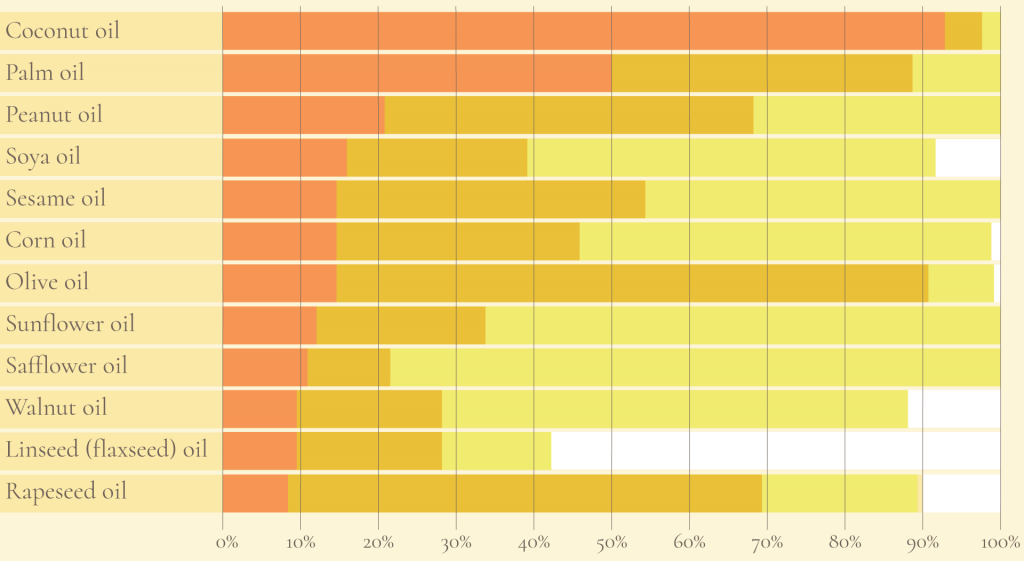
All oils contain a mixture of unsaturated fat and saturated fat and the healthiest ones to use are those with the lowest saturated fat and highest unsaturated fat.
So, if you’re asked what is the healthiest oil to cook with, you now know that you want an oil with a low saturated fat content and high in unsaturated fat. Cold pressed rapeseed oil is ideal, find out more here and find stockists here.
Now that the weather is warming up, it is the perfect time to start making salad dressings with cold pressed rapeseed oil. With half the saturated fat of olive oil and ten times the Omega 3 of olive oil, cold pressed rapeseed oil is a fantastic choice for creating healthy salad dressings. Not only healthier, Mellow Yellow Cold Pressed Rapeseed Oil has a very subtle nutty flavour with buttery undertones, a fantastic flavour profile for creating delicious salad dressings. As we grow, press and bottle our rapeseed oil on our farm in Northamptonshire to LEAF Marque standards, you can rest assured that you are using a high quality, environmentally responsible British product.
Now that we know how great the oil is, here are some recipes for salad dressings with cold pressed rapeseed oil…
Blackberry Vinegar Dressing
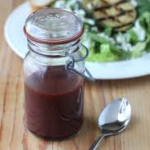
Ingredients:
1tsp Dijon mustard
1tbsp blackberry vinegar (we like Scrubby Oak or you can make your own with our simple recipe below)
3tbsp Farrington’s Mellow Yellow Rapeseed Oil
Method:
Mix the blackberry vinegar and dijon mustard in a screw top jar, then put the lid on and shake well. Add the Mellow Yellow (put the lid on again!) and shake vigorously again to get it all thoroughly blended. Adjust seasoning to taste. Store in the fridge and enjoy.
For the Blackberry Vinegar, steep blackberries with an equal quantity of cider vinegar for 5-10 days. After this time, strain the liquid and boil for 8-10 minutes with 450g of sugar per 700ml of liquid.
Sweet Oriental Dressing
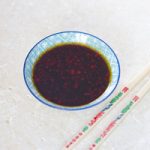
Ingredients:
1tbsp runny honey
½ chopped red chilli
1 tbsp dark soy sauce
1 tbsp Mellow Yellow Rapeseed Oil
Method:
Combine the runny honey, chopped chilli, dark soy sauce and Mellow Yellow Rapeseed Oil. Stir vigorously until combined.
Did you know that we make our own range of salad dressings?
– Honey & Mustard Dressing – Superbly balanced sweetness with a fantastic bite. Use on anything from a salad to a sausage. Try Honey & Mustard on our Asparagus, Salmon and Avocado Bruschetta as a tasty lunch or light dinner, the salmon and avocado perfectly complement the sweet and sharp flavour from honey and mustard.
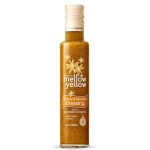
– Classic Vinaigrette – The ultimate salad dressing with a sharp tangy taste, perfect for a green salad. Try Classic Vinaigrette in this recipe for a Protein Power Pot with quinoa, watercress, egg and tuna for a filling lunch recipe ideal for taking to work.
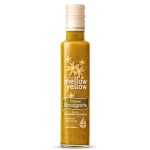
– Balsamic Dressing – A modern British twist on the classic Italian dressing, made with Aspall’s Apple Balsamic Vinegar for a deliciously fruity flavour. This dressing is perfect with Tomato, Basil and Mozzarella to highlight the delicious Italian flavour of the balsamic.
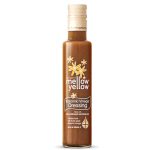
Find more salad recipes on the Recipe section of our website.
Duncan Farrington takes a closer look at what are fats, the different types of fats and clears up some of the confusion surrounding them:
We often hear contradicting messages about what we should and should not eat in our diets, we are told some foods are ‘good’ and others are definitely ‘bad’. It is confusing and frustrating sometimes not knowing what to do for the best. I really believe in keeping things simple when it comes to eating a healthy diet, plus being honest with myself in the choices I make. For example, I personally enjoy spending an evening with friends over a couple of beers, but if I was to do this every evening of the week, over time it would lead to unhealthy consequences. The choice is mine.
What are fats?
In our diet, we need the right balance of macro and micro nutrients. Macro nutrients are the main food groups of carbohydrate, protein and fat. If we eat a balance of the three macro nutrients, preferably in as broader range of different foods as possible and ideally in a non-processed diet, we will also get all the micro nutrients of minerals and vitamins needed in our diet too.
As a very simple rule of thumb, a healthy diet consists of plenty of fruit and vegetables, plus around a third of our daily food intake coming from each of the main food groups – carbohydrate, protein and fat.
![]() Carbohydrates are found in foods such as cereals and rice, bread, potatoes, pasta, sugar.
Carbohydrates are found in foods such as cereals and rice, bread, potatoes, pasta, sugar.
![]() Proteins are found in meats, fish, pulses.
Proteins are found in meats, fish, pulses.
![]() Fats are found in cooking oils, fats and nuts.
Fats are found in cooking oils, fats and nuts.
It can become more confusing when we consider that most foods contain a mixture of the different food groups. For example, milk and dairy foods contain carbohydrates, proteins and fats as well as important vitamins and minerals. Fruits are a great source of minerals and fibre, but also contain carbohydrates (sugars). Eggs have both protein and fat. However foods such as biscuits and cakes are equally high in fat and sugar.
Fat is a crucial part of our diet, it is the most efficient source of energy, it helps our bodies absorb fat soluble vitamins, such as vitamins A,D,E and K. Fats play crucial roles within our bodies from cell membrane formation, to the development of our brain and even communication between different cells. They also insulate organs and contribute towards maintaining body temperature.
Like other food groups, fats are also complex, they are formed from fatty acids and can be split into three main types; Saturated, Poly-unsaturated and Mono-unsaturated. These terms are simply a description of the molecular make up of the particular fatty acid in ratio of the carbon to hydrogen atoms and how they are bonded together. Don’t worry about the chemistry – I struggle with it myself. However, just as we need a balance of macro nutrients in our diets, we also need a balance of the different fats, with around an equal split between saturated, poly-unsaturated and mono-unsaturated fats being a simple rule of thumb.
The much-heralded Mediterranean diet is shown as an example of healthy eating, where the population had much lower cases of heart disease compared with northern European populations. The Mediterranean diet is low in saturated fat, mainly comprising of olive oil, oily fish which contains poly-unsaturated fats and plenty of fruit and vegetables. This compared with a traditional northern European diet which is high in saturated fat, mainly from animal fats and not enough fruit and vegetables. It is important to recognise that the total fat consumed in the two diets was similar, it was just that one was in the right balance, where the other was not.
An easy way to recognise a saturated fat is that it is solid at room temperature, only becoming liquid once it is heated. Over the years, successful health messages have resulted in greater awareness of the need to reduce our saturated fat intake in Britain, which has been largely successful. We now eat less fatty meat and more sources of plant-based fats.
Oily fish is an important part of the Mediterranean diet because it is a good source of poly-unsaturated fatty acids. Poly-unsaturated fatty acids play vital roles in the reduction of cholesterol in our bodies as well as being crucial for healthy brain and eye development. They are often called essential fatty acids, as the body can only get them in the diet and can not make them internally. These fats can also be found in certain nuts and seeds such as rapeseed, sunflower seed or peanuts. As nutritionists became aware of the need and role of poly-unsaturated fats in the diet following World War II, food companies developed non-dairy spreads to replace butter which has a higher saturated fat content with ‘healthier’ alternatives such as sunflower or corn oil, these have less saturated fat and higher poly-unsaturated fats. However, over the years, knowledge and learning about these complex fatty acids increased, to discover that poly-unsaturated fats are also made up of different types which can be broadly categorised in to Omega 3 and Omega 6. Not only did scientists discover the different types of poly-unsaturated fats, they also discovered that bodies need to consume these in an ideal balance of around two parts of Omega 6 for every one part of Omega 3.
With this new-found knowledge, it was also realised that the oils traditionally used to make non-dairy spread, were good sources of Omega 6, but had little or no Omega 3. Additionally, people who eat a high proportion of processed foods, much of it using sunflower, corn or palm oils for example, were in fact eating an unhealthy ratio of Omega 6 to Omega 3 of up to 20 times to 1, compared to the ideal of 2 to 1, causing other bad health issues in our diet. Some responsible food manufacturers have recognised this problem and have replaced such unbalanced fats with better options. A good example is a leading brand of non-dairy spread which used to be made with sunflower oil, which had the strap line in advertising campaigns in the 1980’s about it being ‘high in poly-unsaturates’, even though sunflower oil has no omega 3. The recipe was completely changed to replace sunflower oil with rapeseed oil, which has the perfect balance of poly-unsaturated fats in a ratio of 2.6g of Omega 6 for every 1g of Omega 3.
The final type of fat we need in our diet is mono-unsaturated. Mono-unsaturated fats are found in plant foods such as nuts and seeds, with olive oil and rapeseed oil being rich sources of these fats, as well as avocados for example.
For more information on what are fats and the role of fats in our diet, look at https://www.farrington-oils.co.uk/interesting-oil/ which also includes three excellent articles form the British Nutrition Foundation.
As I said at the start, information and advice can be confusing and frustrating, but for my part I stick to my own rules of:
![]() Eat a well-balanced diet, around a third each of carbohydrate, protein and fat
Eat a well-balanced diet, around a third each of carbohydrate, protein and fat
![]() The broader the diet of different foods and meals I enjoy, the better
The broader the diet of different foods and meals I enjoy, the better
![]() Eat a well-balanced diet of the different fats
Eat a well-balanced diet of the different fats
![]() ‘Good’ and ‘Bad’ foods don’t really exist, it is just the quantity of each that makes a difference
‘Good’ and ‘Bad’ foods don’t really exist, it is just the quantity of each that makes a difference
![]() Be honest with yourself – I know what treats to enjoy sparingly and what I should eat more of. More cabbage, less biscuits!
Be honest with yourself – I know what treats to enjoy sparingly and what I should eat more of. More cabbage, less biscuits!
For more information, The British Nutrition Foundation has written independent articles for us on The Importance of Fats, Introduction to Healthy Fats and A Comparison of Different Culinary Oils.
We all know that food waste is a growing problem. In 2016, British shoppers threw away a shocking 160 million bananas! Alhough they may be the countries favourite fruit to snack on, they are also the most wasted. Unfortunately, 1 in 3 people will throw away a banana if it has a bruise or even a single black mark on its skin. It really is bananas!
Here at Farrington’s, we think that one of the best ways to cut down food waste is to shout about all the amazing recipes that you can use these ingredients in, rather than throwing them away. So, here are our Top 5 Leftover Banana Recipes…
If you’re not ready to make any of these recipes straight away, just peel and slice your bananas, and then freeze them in a Tupperware box or freezer bag. Once in slices, the frozen bananas are perfect for smoothies or any of our other recipes. You’ll have banana ready to go in your freezer for whenever you fancy making one of these recipes!
Banana Bread – The original way to use up bananas. Banana bread is a regular in the Mellow Yellow kitchen as it is such a simple cake to bake and gives truly delicious results! We have two well loved recipes, click here for our traditional recipe and here for our vegan alternative!
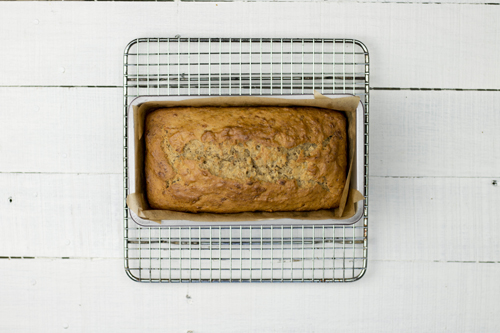
Banana Ice-Cream – Freeze bananas as they go past the point you would like to eat them. Cut the frozen bananas into a food processor and add 1 generous tablespoon of vanilla yogurt (or any other type of dairy like quark, double cream, forage frais) per banana. Blitz until smooth. Each banana creates two scoops of ice cream. Serve immediately. (Preferably with warm brownies.)
Vegan Pancakes – If you want to try vegan pancakes, ripe bananas are perfect. Simply mash 1 banana and whisk together with 150ml coconut milk (or any other milk alternative you like), 100g plain flour and ½ tsp baking powder. This mixture is meant to be pourable so if it’s too thick just add a splash more milk, or if too runny add another spoonful of flour. Heat up some Mellow Yellow Rapeseed Oil in a frying pan and dollop large tablespoons of your mixture in to cook. Cook each pancake for 2-3 minutes, flipping when bubbles begin to appear on top, then cook for a further 2 minutes. Serve your pancakes in a big stack with your choice of sauce drizzled over.
Carrot and Banana Cake – Our oldest and most loved cake recipe. So easy, delicious and freezes well – a total favourite. The carrot and banana cake is a great afternoon tea sweet choice and a fantastic way to cut down on your food waste by using bananas rather than throwing them away. Find the recipe here.
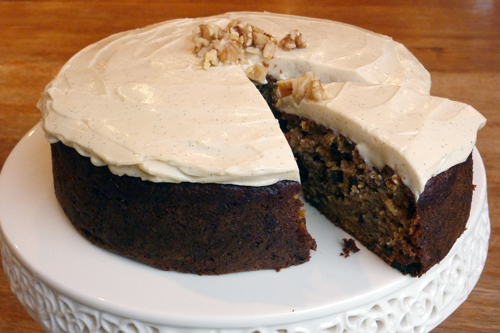
Smoothies – Overripe or frozen bananas are perfect for smoothies! Simply add them to your blender with any other fruit, milk or yogurt you have and after a a quick blitz, you’ll have a delicious and filling breakfast smoothie!
What do you use your leftover bananas for? Share your recipes with us on Facebook, Twitter or Instagram!
Did you know that cold pressed rapeseed oil is a great, heart-happy oil? Are you looking to improve your health? Well we have one simple change for you that will help you with this goal. Mellow Yellow Cold Pressed Rapeseed Oil is a brilliantly healthy, British cooking oil that is grown, pressed and bottled in Northamptonshire. Read on to find out more about all the fantastic health benefits of cold pressed rapeseed oil…
Top 4 Health Benefits of Cold Pressed Rapeseed Oil
Low saturated fat
A balance of Omega 3 and Omega 6
Contains Vitamin E
Naturally occurring plant sterols
Low saturated fat
Saturated fat is usually found in high levels in fatty meats, full fat dairy products, coconut oil and lard. For many years, health professionals have advised against consuming high amounts of saturated fat as they have been shown to raise your LDL (Low Density Lipoprotein) levels. LDL is known as ‘bad’ cholesterol as high levels of LDL blood cholesterol increases the risk of heart disease by building up in our arteries and causing them to narrow. Cold pressed rapeseed oil, however, has very low levels of saturated fat. This is one of the major health benefits of cold pressed rapeseed oil! For more information from the British Heart Foundation, click here.
A balance of Omega 3 & Omega 6
Mellow Yellow Cold Pressed Rapeseed Oil contains both Omega 3 and Omega 6. These are essential fatty acids that the body is unable to produce itself so we need to ensure that we consume these in our diet. These two essential fatty acids contribute to brain development, growth and maintaining a healthy immune system. It is important that we consume these two fatty acids in the correct ratio as found in cold pressed rapeseed oil. It is this ratio that makes this one of our top health benefits of cold pressed rapeseed oil. We have more information on Omega 3 and 6 on our Health and Nutrition page.
Contains Vitamin E
Another of the health benefits of cold pressed rapeseed oil is that it contains vitamin E. Vitamin E occurs naturally in cold pressed rapeseed oil and is needed for a strong immune system and healthy eyes and skin.
Naturally occurring plant sterols
Last but not least in our top health benefits of cold pressed rapeseed oil are the naturally occurring plant sterols found in this brilliant oil. Plant sterols are fat-soluble compounds found in some vegetables, nuts and seeds, including rapeseed. They are similar in structure to cholesterol therefore when eaten, plant sterols compete with cholesterol for absorption into the bloodstream. Our bodies find it easier to absorb plant sterols as they block the cholesterol from being absorbed. This results in the cholesterol passing through and out of the body via the stool. Find more information here.
Comparison of oils:
With these brilliant health benefits of cold pressed rapeseed oil, it’s easy to see why so many people are swapping to Mellow Yellow Rapeseed Oil! Find out where to buy here.
If you want to know more about cold pressed rapeseed oil, how we produce it, how it grows, the simple way we press the seeds to produce our cold pressed rapeseed oil and more on what is so special about cold pressed rapeseed oil, have a look at this article!
For recipe inspiration on what to cook with cold pressed rapeseed oil, visit our Recipe page here.
As the UK’s first seed to bottle producer of rapeseed oil, our British heritage is incredibly important to us! From 24th September to 8th October, the UK has been celebrating British Food Fortnight with the hashtag #BritishFoodFortnight. To show our passion for British food, we’ve been sharing our favourite recipes on Twitter each day. In case you missed these recipes, we’ve collated them all here for you. So take a look through and let us know which ones you’ll be trying next.
No self-respecting roast dinner would ever be seen without these by its side. Using our British cold pressed rapeseed oil on your Sunday roasties ensures you the crispiest potatoes. Thanks to the high smoke point of the oil, your potatoes can get nice and hot, helping them get that crispy coating.
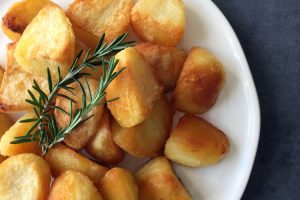
A quintessentially British fruit, the humble plum sings in this Plum Cake recipe. With ground almonds to add a nutty flavour, this cake is fantastic for a Sunday afternoon tea, or even just to whip up mid-week for a surprise guest!

Using British beef, this recipe will always go down well when brought to the table. Simple, perfectly seasoned and deliciously succulent, it truly is a classic dish. We love our steak served with potato wedges and garlic mushrooms, but there are so many other options you could choose from.
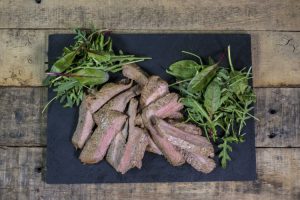
Almond and rhubarb make perfect partners in our Rhubarb Cake, which is an easy yet impressive bake. This is a fantastic way to use any seasonal rhubarb you have, as well as impressing your family with a delicious treat for them to tuck into!

One Pot Honey & Mustard Parsnip Chicken
This recipe uses our Honey & Mustard dressing as a delicious cooking sauce. Simply pour the sauce over your chicken thighs and British parsnips, pop it in the oven and there you go, a tasty one pot dish that’s perfect to warm you up during the colder weather that British Food Fortnight signals.
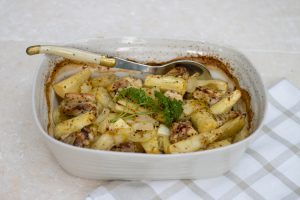
Usually eaten at Easter time, British lamb can also be sourced later on in the year with a stronger, more developed flavour. Our recipe for Roast Lamb uses garlic, rosemary, lemon and plenty of seasoning to bring out the most flavour possible from your lamb.
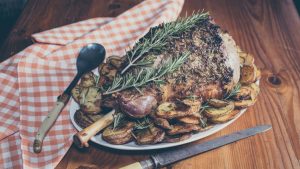
A true British favourite, we couldn’t talk about British Food Fortnight without including these. In our opinion, no matter what meat you’re having, no Sunday roast is complete without a Yorkshire pudding brimming with gravy. Get your oil nice and hot, ours has a high smoke point which really helps, to get those puddings rising nice and high!

Blueberry & White Chocolate Muffins
The delicate flavour of Mellow Yellow lends itself perfectly to cake baking and is particularly good in these marvellous muffins. Blueberry and White Chocolate Muffins fresh from the oven will attract the entire household, so make sure to grab one for yourself before everyone else descends!
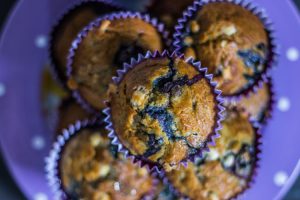
Such a simple side to make, and goes with so many different things. We like using British rooster potatoes in our Potato Wedges, but you can use any type of potato. A drizzling of Mellow Yellow and a good pinch of salt is all you need to create the most delicious wedges to be enjoyed by the whole family.

A beautifully light and fluffy lemon cake with a zesty lemon drizzle icing. Quick and easy for an everyday treat for the family but makes an impressive afternoon tea centerpiece if you’re planning a party.

Fresh Asparagus and Mellow Yellow Mayonnaise
British asparagus has to be one of our highlights of June, especially when combined with our delicious Mellow Yellow Mayonnaise. Our favourite way to serve this is by BBQ’ing the asparagus then serving it in a big pile with plenty of mayo ready for dipping!

This recipe produces a really easy, moist fruity apple cake. A perfect way to use up any seasonal British apples (cookers or eating apples) whichever you have in the garden or the fruit bowl. Served with creme fraiche, or even ice cream if the weather is warm enough, this cake is sure to be a hit!
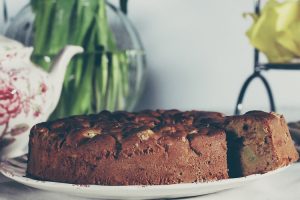
A wonderfully unusual way to use courgettes when in season. This fluffy courgette cake with its delicious lime cream cheese filling is a coffee morning or afternoon tea show stopper!

Pastry no longer needs butter! Using our incredibly simple recipe, you can make a quick and delicious pastry with Farrington’s Mellow Yellow Rapeseed Oil. This recipe is for a fruity Blackberry and Apple Galette, perfect with a hearty pouring of custard or double cream.

British Food Fortnight has been a great way for us to shout about all the amazing food produced in Britain, but just remember to keep buying British! Tweet us and let us know which recipe is your favourite!
Eli Farrington reveals what you might not know about this underused British ingredient
1. A truly versatile all-purpose culinary oil; cold pressed rapeseed oil contains the optimum ratio of 1:2 of omega 3 to omega 6, as well as being a natural source of
vitamin E.
2. It has the lowest saturated fat content of any widely available culinary oil – half that of olive oil!
3. Cold pressing is the traditional and natural way to produce oil. It is gently squeezed out of the seed at temperatures below 40C ensuring that the natural goodness and character of the oil is preserved.
4. The delicate, gentle flavour makes it an ideal partner for almost any food, great for drizzling or dipping.
5. Farrington’s Mellow Yellow emulsifies beautifully making it perfect for dressings, mayonnaise, pesto, and hummus; a healthy complement to starters, salads and vegetables.
6. With a smoke point of 220C, cold pressed rapeseed oil is a wonderful high temperature cooking oil, making the most perfectly golden and crispy roast potatoes, and aromatic, nutty stir-fries.
7. A delicious and healthy substitute for butter and margarine, when you bake with this oil it produces deliciously moist and light cakes that feature a subtle nutty flavour. It’s fabulous used in flapjacks and brownies. When substituting butter with our oil, add a little
less, about 80% of the total weight required and make up the remainder with a liquid such as milk, rice milk or soya milk. This is to account for the milk part and the fat content of the butter. If substituting for margarine, the rapeseed oil content would need to be less, about 75% (with more milk) as there is a higher water content in margarine.
8. As we only use oil from the first pressing of our rapeseed it is the culinary equivalent to extra virgin, cold pressed olive oil.
9. There is no such thing as commercially grown GM rapeseed in Britain.
10. First cultivated in Britain by the Romans; rapeseed oil has been used throughout Europe since the 16th century.
We’ve been playing around with this for some time, eggs, oil and tears have literally gone into it. Eli’s been busy mixing, whilst Duncan and the rest of the team have been busy tasting. We’ve tried it on salads (of course); in sandwiches; on chips; and dipped many a spoon in. At last we now have a new mayonnaise to be proud of, and something your customers will want to buy!
This classic Mayonnaise is uncompromising on health, taste, and quality. Using Farrington’s award winning MELLOW YELLOW® cold pressed rapeseed oil as the base; which is naturally low in saturated fat, full of Omega 3 and combining British free range eggs, a hint of Dijon mustard, and a lemony sharpness, this additive free mayonnaise will brilliantly complement any food.
To celebrate the launch, we are delighted to have to have 20 FREE entrance tickets available (worth £25 each!) for the first 20 people who email us (One ticket per organisation). If you wish to book tickets online, you can get 20% off the entrance price by entering the code PH4KK. For more information on the festival please visit www.realfoodfestival.co.uk
To stock our mayonnaise or for more information, please email info@farrington-oils.co.uk or call 01933 622809

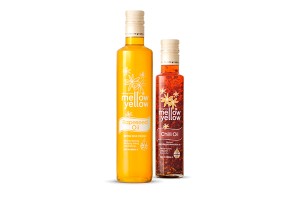 Oils
Oils Rapeseed Oil
Rapeseed Oil Chili Oil
Chili Oil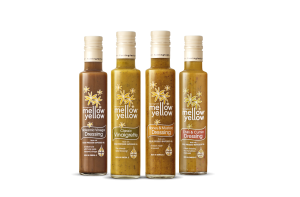 Dressings
Dressings Classic Vinaigrette
Classic Vinaigrette Balsamic Dressing
Balsamic Dressing Honey & Mustard
Honey & Mustard Chili & Cumin
Chili & Cumin